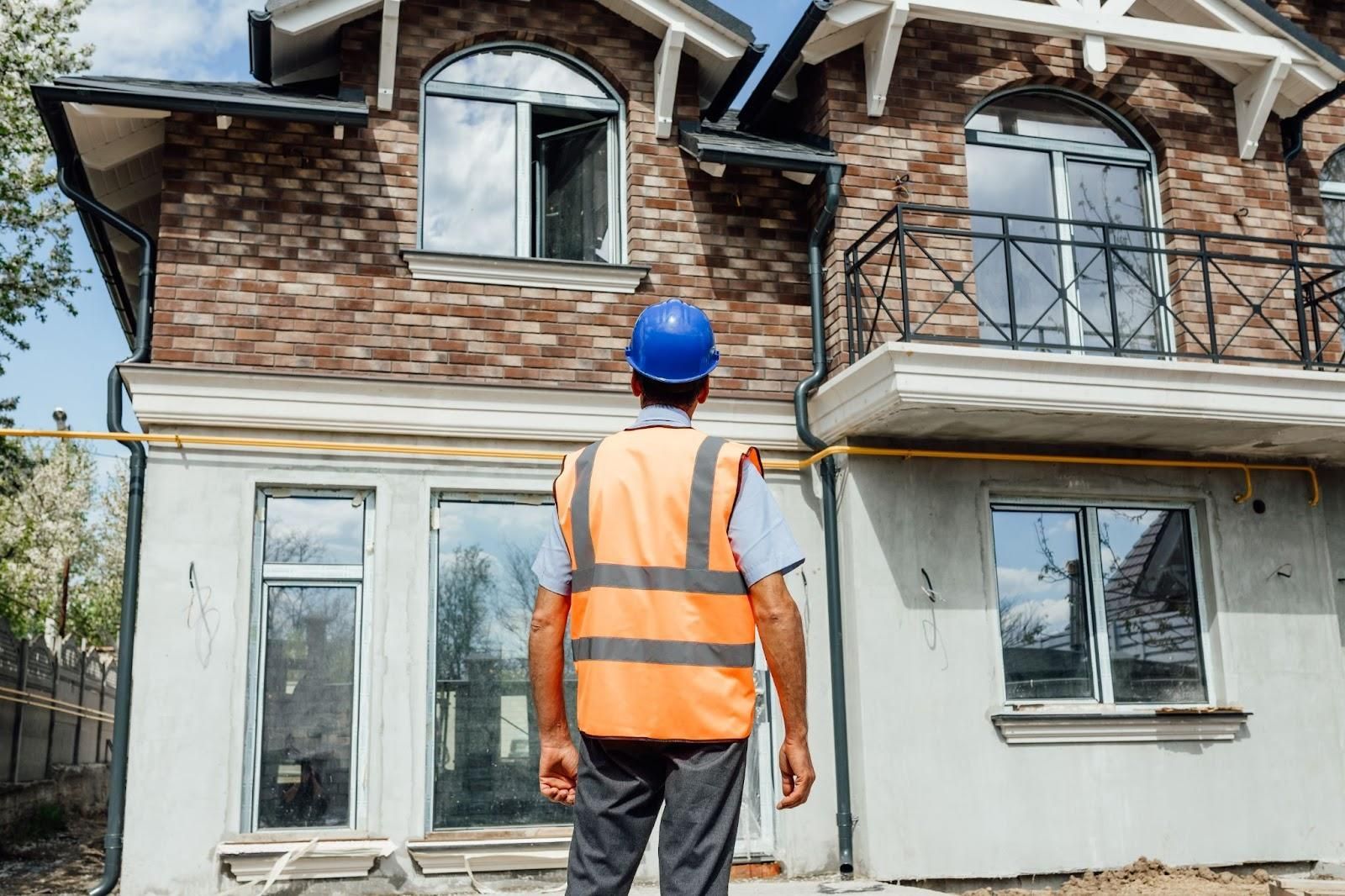Small Remodeling Project? Here’s How to Plan It for Stress-Free Success
Planning a small remodeling project can feel overwhelming for many homeowners. From budgeting to design choices, the process often brings unexpected challenges that can lead to frustration. Homeowners frequently grapple with finding the right contractors, obtaining necessary permits, and ensuring their vision aligns with practical limitations.
Accurate planning is essential to avoid common pitfalls that can derail a project. By focusing on clear goals and effective communication, homeowners can navigate the complexities of remodeling with greater ease. This article will provide essential tips and insights on how to plan a small remodeling project, helping to transform spaces without the typical stress.
Understanding Your Renovation Goals
Defining clear goals is essential for a successful remodeling project. Goals guide design decisions, budget planning, and contractor selections, ensuring all efforts align with the homeowner's vision.
Defining Your Vision
Identifying the desired style helps establish a unified aesthetic. Homeowners should consider functional needs, such as additional storage or improved layout. Visualizing the finished space can aid in articulating ideas to contractors. Utilizing inspiration from design magazines or online platforms can facilitate clarity in vision.
Setting Your Budget
Establishing a realistic budget prevents overspending and allows focus on essential renovations. Homeowners should account for material costs, labor, and unexpected expenses, setting aside a contingency fund. Prioritizing projects based on their impact on home value can align financial resources with renovation goals. Clear communication with contractors about budget constraints promotes informed decision-making throughout the project.
Researching Design Options
Researching design options plays a crucial role in planning a small remodeling project. Homeowners can explore various styles, trends, and inspirations to define their vision effectively.
Exploring Styles and Trends
Exploring styles and trends helps identify the aesthetic that fits individual preferences. Popular options include modern minimalism, rustic charm, and mid-century design. Homeowners can review recent publications, websites, and social media platforms for fresh ideas. Observing local homes enhances understanding of regional styles. Incorporating relevant styles ensures a harmonious design that enhances overall appeal.
Gathering Inspiration
Gathering inspiration involves compiling images, materials, and colors that resonate with desired outcomes. Utilizing platforms like Pinterest or architectural magazines offers a visual reference for preferred aesthetics. Visiting showrooms or home improvement stores allows homeowners to interact with materials directly. Attending local home shows can spark ideas and facilitate networking with professionals. Collecting diverse sources of inspiration informs design decisions and streamlines the planning process.
Creating a Project Timeline

Establishing a project timeline streamlines remodeling tasks, ensuring an organized workflow. A clear timeline helps manage expectations and resources effectively.
Estimating Timeframes
Estimating timeframes involves breaking down the project into manageable phases. Identify major milestones and allocate realistic durations for each task, from planning to completion. Each phase should include time for permit applications and inspections, if necessary. Prioritize tasks that require contractor involvement as they may influence overall project timelines. Conducting a detailed timeline enhances adherence to deadlines and reduces disruptions throughout the renovation process.
Scheduling Contractors and Tasks
Scheduling involves coordinating timelines with contractors and service providers. Confirm availability and secure appointments before commencing work. Assign specific days for tasks like demolition, installation, and inspections to maintain efficiency. Consider variances for weather delays, material deliveries, and unforeseen challenges. Open communication with contractors promotes proactive scheduling adjustments, ensuring that the remodeling project progresses smoothly. This strategic approach fosters trust, reliability, and adherence to local codes and regulations.
Selecting Materials and Finishes

Choosing the right materials and finishes is essential for a small remodeling project. Quality materials enhance durability and aesthetic appeal, contributing to the overall success of the remodel.
Evaluating Quality and Cost
Assessing quality involves examining product specifications, warranties, and reviews. Selecting durable materials may require higher upfront costs, but they lead to long-term savings. Choosing versatile finishes can also maximize impact while staying within budget constraints. Balancing quality and cost ensures homeowners achieve their desired outcomes without overspending.
Sustainable Choices
Opting for sustainable materials reflects a commitment to environmental responsibility. Selecting reclaimed wood, low-VOC paints, and energy-efficient fixtures minimizes ecological impact. Incorporating local resources often reduces transportation emissions and supports the community. Prioritizing sustainable choices benefits the planet while enhancing the home's value.
Employing these strategies for selecting materials and finishes aids in creating a functional and beautiful space that meets remodeling goals.
Hiring Professionals vs. DIY

Deciding between hiring professionals and tackling a DIY project requires careful consideration of skills, budget, and project complexity.
When to Hire a Contractor
Hiring a contractor suits projects with specific technical requirements or complex designs. Contractors provide expertise in licensing, compliance, and safety standards, essential for home inspections in Greater Houston. Hiring professionals minimizes risks associated with insufficient knowledge about local building codes and regulations, ensuring quality work. Contractors streamline timelines by managing multiple tasks and subcontractors efficiently, which is crucial for larger renovations.
Tips for Successful DIY Projects
Successful DIY projects require planning and organization. Research techniques and materials to understand the necessary skills for the task. Set a realistic budget and timeline, accounting for potential delays and unexpected expenses. Gather all tools and materials before starting to avoid disruptions during the process. Consider using instructional videos or guides to enhance understanding of specific tasks. Maintain safety measures, ensuring a secure work environment and adherence to safety standards. These practices create a productive DIY experience while achieving project goals.
Conclusion
Successfully planning a small remodeling project can transform a home while avoiding unnecessary stress. By defining renovation goals and establishing a realistic budget homeowners can create a clear path forward. Researching design options and gathering inspiration ensures that the final outcome aligns with personal style.
Creating a detailed project timeline helps in managing tasks and contractor schedules effectively. Whether choosing to hire professionals or take on a DIY approach careful planning and communication are key to a smooth process. With these strategies in place homeowners can achieve their remodeling dreams and enhance their living spaces.
Frequently Asked Questions
What should homeowners consider when planning a small remodeling project?
Homeowners should clarify their renovation goals, establish a realistic budget, and prioritize design choices. Understanding functional needs and desired styles is crucial, along with preparing for unexpected costs. Open communication with contractors is also vital to ensure a successful remodeling experience.
How can homeowners define their remodeling vision?
To define their vision, homeowners should explore different design styles and gather inspiration from publications, social media, and local homes. Platforms like Pinterest and visits to showrooms can help compile ideas and materials that resonate with their aesthetic preferences.
Why is setting a realistic budget important in remodeling?
A realistic budget helps homeowners account for all project costs, including materials and labor, while preparing for unexpected expenses. Prioritizing projects based on their potential impact on home value and maintaining clear communication with contractors about budget limits are fundamental steps to success.
What role does a project timeline play in remodeling?
Creating a project timeline allows homeowners to structure their remodeling tasks efficiently. By breaking the project into phases, identifying milestones, and scheduling contractors, they can ensure an organized workflow and manage timelines better, which aids in adhering to local codes and regulations.
How should homeowners choose materials and finishes for their project?
Homeowners should evaluate materials based on quality, cost, and reviews, balancing durability with their budget. Opting for sustainable choices like low-VOC paints and reclaimed wood can enhance both aesthetics and home value while minimizing ecological impact.
When is it advisable to hire a contractor for a remodeling project?
Hiring a contractor is advisable for complex designs or larger renovations that require expertise and compliance with local building codes. Contractors can effectively manage timelines and multiple tasks, streamlining the overall remodeling process for a smoother experience.
What DIY tips should homeowners consider when undertaking remodeling projects?
Homeowners should plan thoroughly, budget realistically, and gather necessary tools and materials before starting DIY projects. Utilizing instructional resources and prioritizing safety measures is essential to ensure a productive and successful DIY experience while meeting remodeling goals.











